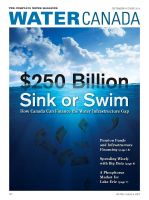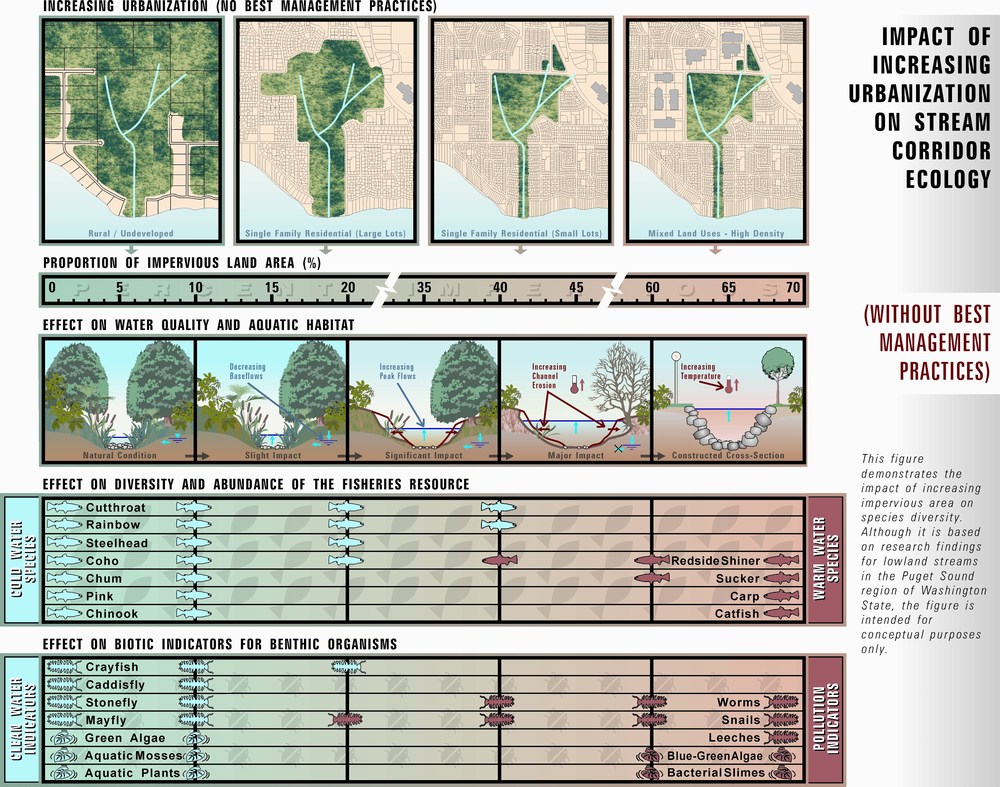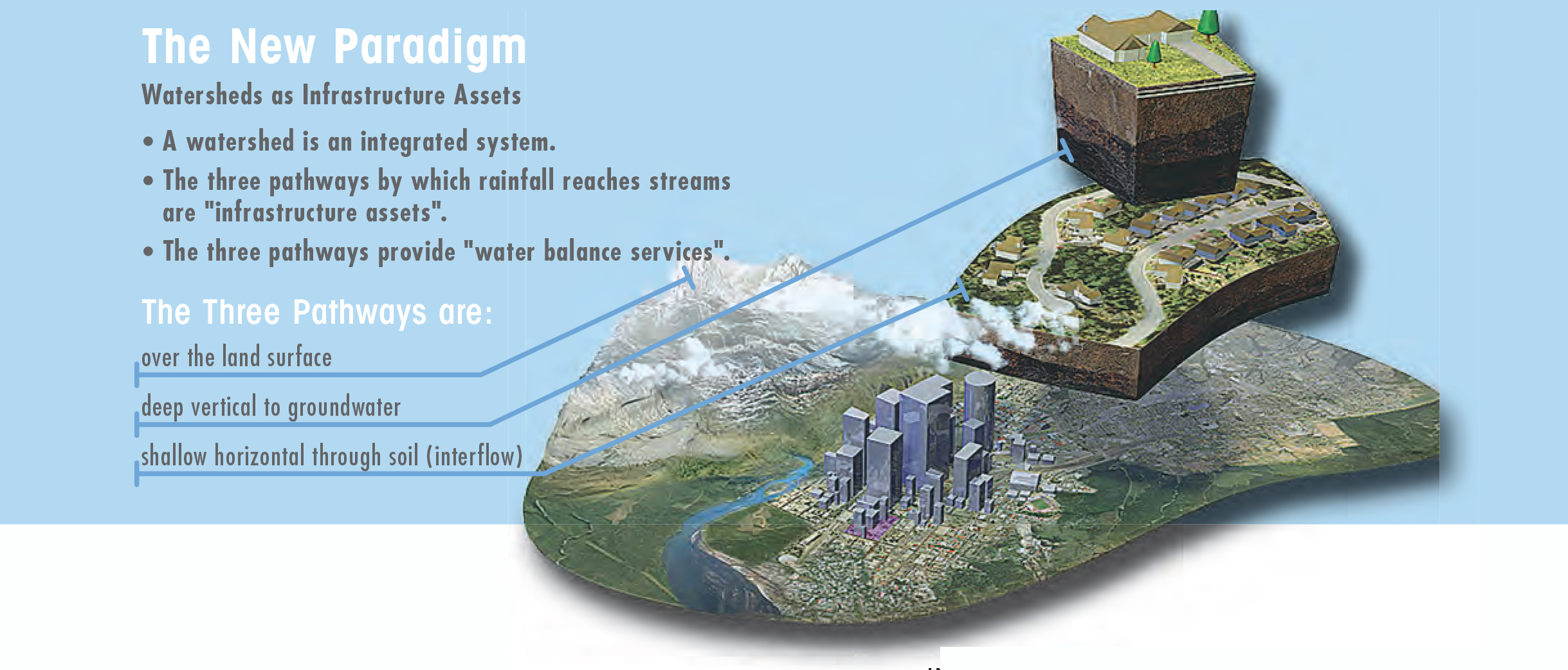ARTICLE: Hydrology Rules! – “Simply put, hydrology hits first and hardest,” explained Dr. Richard Horner about insights yielded by Washington State research in the 1990s
Note to Reader:
 The theme for the September-October 2016 issue of Canada Water magazine is: $250 Billion Sink or Swim: How Canada Can Finance the Water Infrastructure Gap. The number increases as assets deteriorate. However, the true scale of the infrastructure deficit in Canada is unknown precisely because there is no set of asset management plans to draw from.
The theme for the September-October 2016 issue of Canada Water magazine is: $250 Billion Sink or Swim: How Canada Can Finance the Water Infrastructure Gap. The number increases as assets deteriorate. However, the true scale of the infrastructure deficit in Canada is unknown precisely because there is no set of asset management plans to draw from.
Canada’s drinking waters, wastewater, and stormwater infrastructure is essential for maintaining quality of life, the environment, and is the backbone of the environment. And so – sink or swim. How do communities close the gap? Where will the money come from?
The September-October 2016 issue features an article by Kim Stephens, Executive Director of the Partnership for Water Sustainability in British Columbia.
Watersheds as Infrastructure Assets
 Titled Watershed Moment, the article by Kim Stephens provides historical context for evolution of an “asset management approach” to urban watershed management in BC. He describes the influence that Washington State research had in the 1990s about changing the conversation from one that was engineering-centric to one that is about whole systems thinking. “Without the legacy work of Richard Horner and Chris May, who knows whether it would have even been possible to evolve our thinking as we have,” muses Kim Stephens.
Titled Watershed Moment, the article by Kim Stephens provides historical context for evolution of an “asset management approach” to urban watershed management in BC. He describes the influence that Washington State research had in the 1990s about changing the conversation from one that was engineering-centric to one that is about whole systems thinking. “Without the legacy work of Richard Horner and Chris May, who knows whether it would have even been possible to evolve our thinking as we have,” muses Kim Stephens.
 “In the 1990s, Bill Derry, the founding Chair, Washington State Stormwater Managers Committee, and I led a workshop program for B.C. local government, and provided cross-border sharing of the latest research. Early access to the findings of Richard Horner and Chris May allowed us to create what became known as the ‘fish pictures’,” wrote Kim Stephens. “These graphics translated the science…and set the stage for British Columbia to move towards sustainable watershed asset management.”
“In the 1990s, Bill Derry, the founding Chair, Washington State Stormwater Managers Committee, and I led a workshop program for B.C. local government, and provided cross-border sharing of the latest research. Early access to the findings of Richard Horner and Chris May allowed us to create what became known as the ‘fish pictures’,” wrote Kim Stephens. “These graphics translated the science…and set the stage for British Columbia to move towards sustainable watershed asset management.”

‘FISH PICTURE’ BASED ON WASHINGTON STATE RESEARCH -Impact of Land Use Decisions on Aquatic Diversity and Abundance (Source: Stormwater Planning: A Guidebook for British Columbia, 2002). Adapted from research by Drs. Richard Horner & Chris May
Whole Systems Thinking
“Their work told us changes in hydrology, not water quality, must be the primary focus of our efforts. If we get the hydrology right, water quality typically takes care of itself in a residential development,” continued Kim Stephens. “Now a professor emeritus at the University of Washington, Richard Horner provides this perspective two decades later:
 ‘Unless and until land development practices mimic the natural water balance, communities cannot expect to restore the biological communities within streams. Simply put, hydrology hits first and hardest—one could pour an equivalent volume of distilled water into a stream, and the consequences for stream health would be the same as if it was urban runoff.’
‘Unless and until land development practices mimic the natural water balance, communities cannot expect to restore the biological communities within streams. Simply put, hydrology hits first and hardest—one could pour an equivalent volume of distilled water into a stream, and the consequences for stream health would be the same as if it was urban runoff.’
“A legacy of past community planning and infrastructure servicing practices is the water balance of urban watersheds is out of balance. Asset management is the lens for bringing land development and infrastructure servicing practice into line with science-based understanding,” concluded Kim Stephens.
To Learn More:
Download Watershed Moment: How British Columbia has incorporated watershed thinking into its asset management to read the complete article published in the September-October issue of Water Canada magazine.



